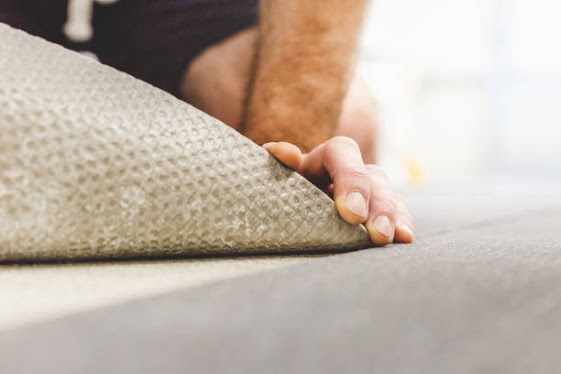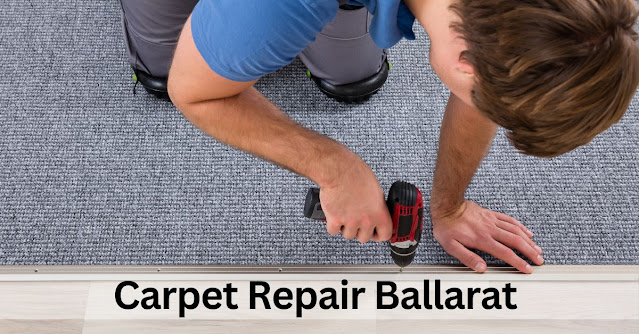Beyond Patching: Advanced Carpet Repair Methods for Seamless Results
- Get link
- X
- Other Apps
Carpet repair goes beyond simple patching and can involve more advanced techniques for achieving truly seamless results. Whether you're dealing with extensive damage, intricate patterns, or specific types of carpet, these advanced methods can help you achieve professional-quality repairs that are virtually indistinguishable from the original carpet. In this guide, we'll explore advanced carpet repair Canberra methods to take your skills to the next level.
1. Re-Weaving Damaged Carpet
Advanced Method: For intricate patterns or plush carpets, re-weaving is a highly skilled technique. It involves unraveling the damaged area and carefully re-weaving new carpet fibers to match the existing pattern.
Tip: Practice on a small, inconspicuous area before attempting re-weaving on a larger scale. Patience and attention to detail are key.
2. Carpet Seam Reconstruction
Advanced Method: In cases where seams have deteriorated or are highly visible, reconstructing the seam can create a seamless look. This involves removing the old seam, trimming the carpet edges, and creating a new, secure seam.
Tip: Ensure you have the right tools, including a seam iron and seam roller, for a professional-grade seam reconstruction.
3. Heat Bonding
Advanced Method: Heat bonding is an advanced technique used to repair damaged carpet by melting the damaged area and fusing it with a spare piece of carpet. It works well for minor burns, melted spots, or tears.
Tip: Practice control and precision when using heat bonding tools to avoid further damage.
4. Dyeing and Color Matching
Advanced Method: Sometimes, the challenge lies in color matching. For faded or stained areas, dyeing the carpet can restore uniformity. This method requires expert color matching and application skills.
Tip: Consult a professional for expert color matching or use a carpet dye kit for DIY projects.
5. Stretching and Reshaping
Advanced Method: For carpets with waves, ripples, or wrinkles, stretching and reshaping can restore the carpet's original appearance. This requires specialized tools like a power stretcher.
Tip: Be cautious not to overstretch the carpet, as this can cause damage. Seek professional guidance for extensive stretching and reshaping.
6. Custom Patchwork
Advanced Method: Custom patchwork is a technique used when matching spare carpet pieces is difficult. It involves creating custom patches by sewing or bonding various pieces together to match the damaged area.
Tip: This method is particularly challenging and may require professional assistance for complex patterns.
7. Invisible Seams
Advanced Method: Creating invisible seams involves using a seaming technique that conceals the seam under the carpet pile. This is ideal for looped or patterned carpets.
Tip: Practice this method on a small, inconspicuous area first, and use a high-quality seaming iron for the best results.
8. Tufting Gun Repair
Advanced Method: For looped or berber carpets with snags, a tufting gun can be used to reinsert snagged loops. This method demands precision and familiarity with the tufting gun.
Tip: Tufting gun repair requires careful handling, so it's advisable to practice on inconspicuous areas before tackling visible repairs.
9. Patching for Patterned Carpets
Advanced Method: Repairing patterned carpets requires exceptional attention to detail. Match the pattern precisely when creating patches and ensure the repaired area blends seamlessly.
Tip: Be patient and take your time when matching patterns. It's often worth the extra effort for a flawless result.
10. Professional Consultation
Advanced Method: Sometimes, the most advanced method is knowing when to seek professional help. Complex repairs, extensive damage, or specialty carpets may require the expertise of a professional carpet repair service.
Tip: Don't hesitate to consult professionals for advice or hire their services when needed. It can save you time, and effort, and ensure the best possible outcome.
Mastering advanced carpet repair methods takes practice and a keen eye for detail. With the right skills and tools, you can achieve seamless results that restore your carpet's appearance and functionality. However, always consider the complexity of the repair and the type of carpet you're working with, and don't hesitate to seek professional assistance when the job demands it.
- Get link
- X
- Other Apps



Comments
Post a Comment